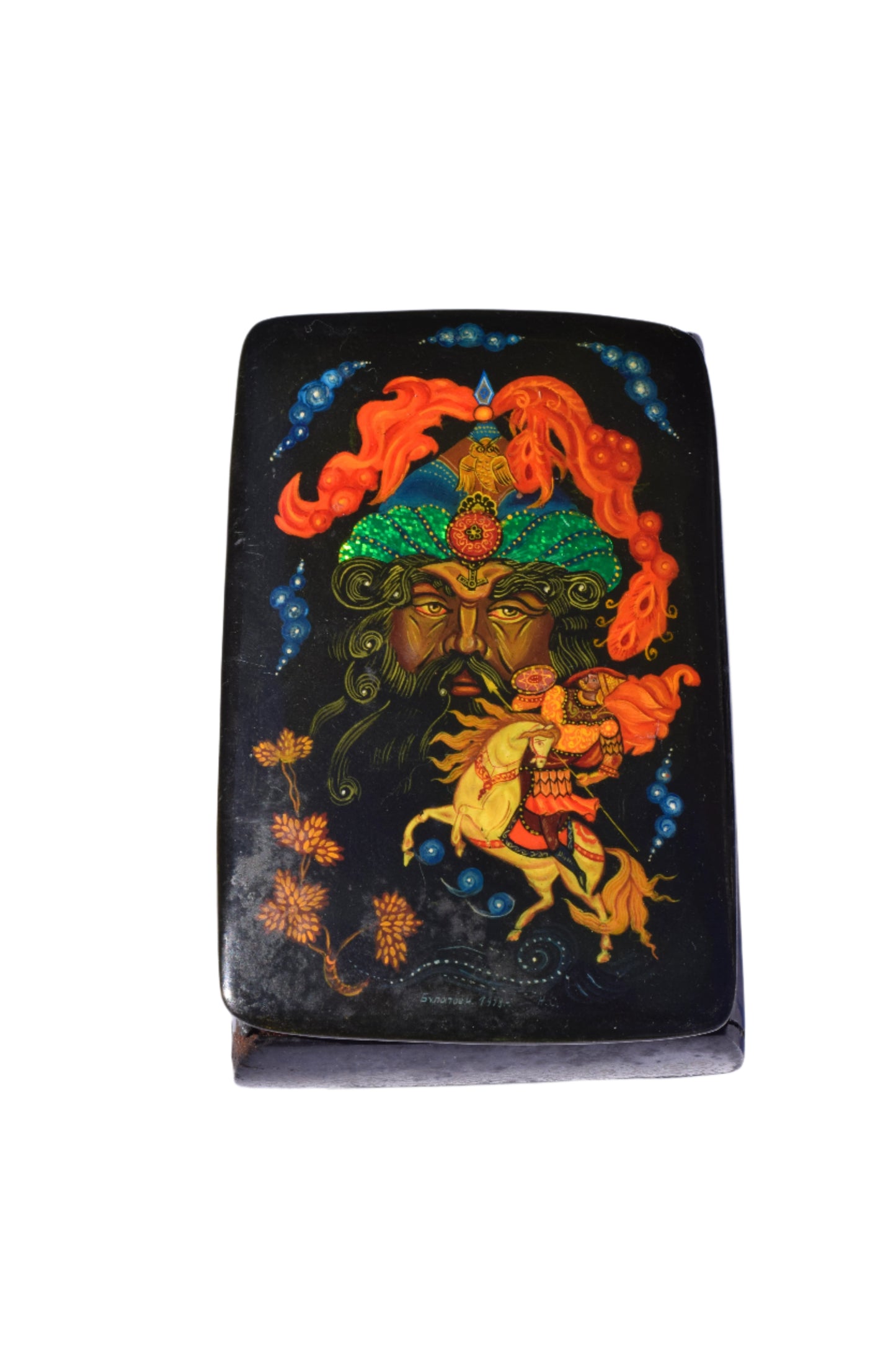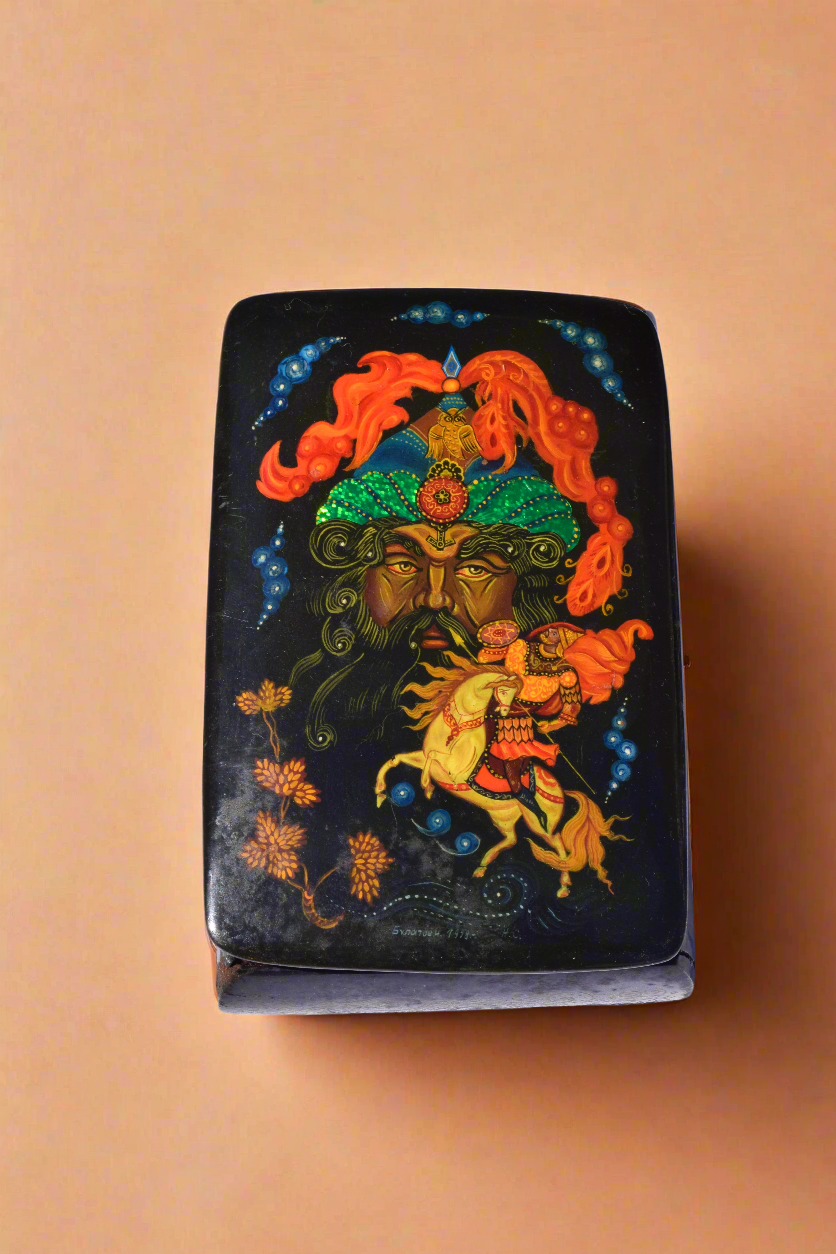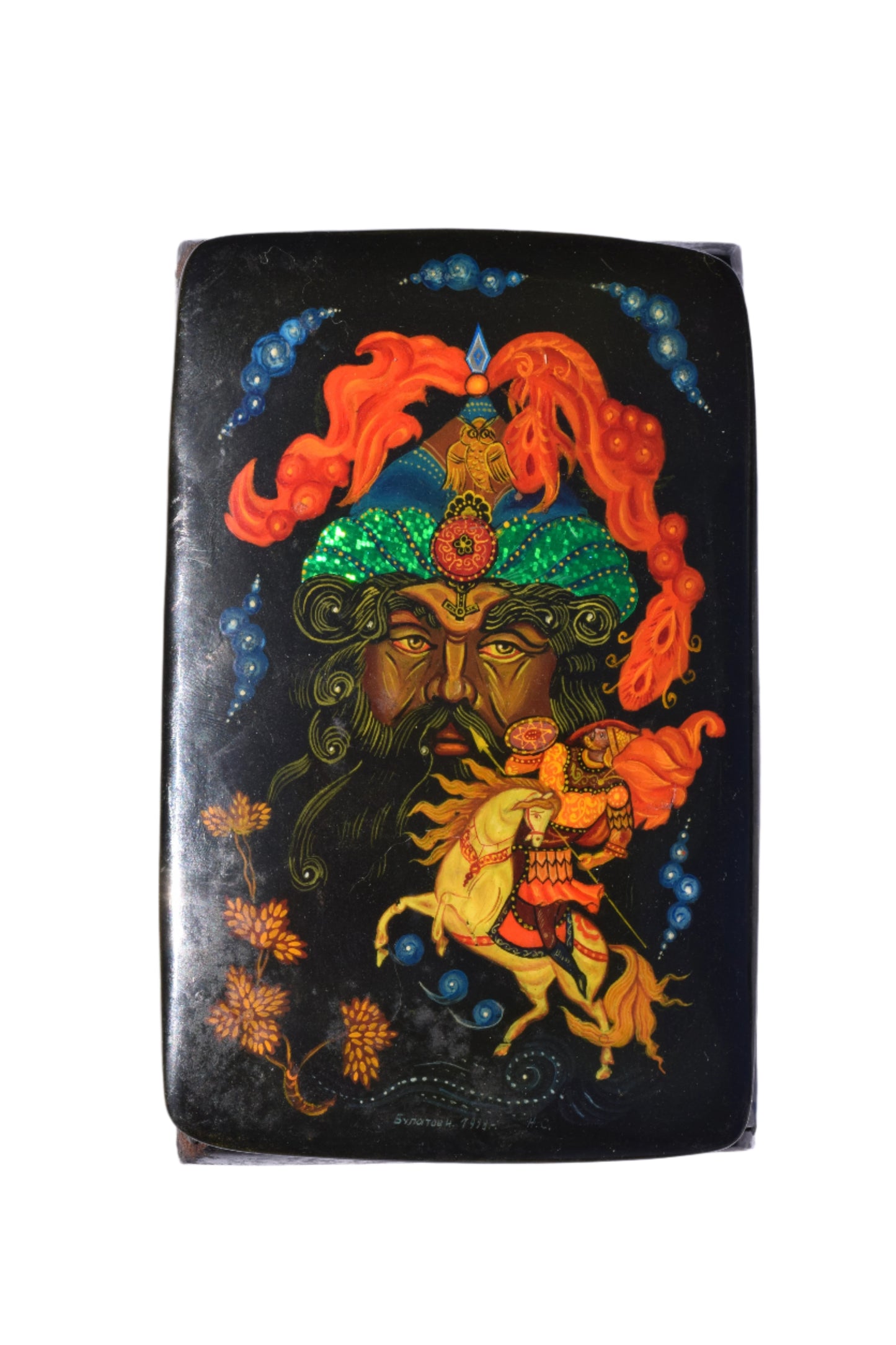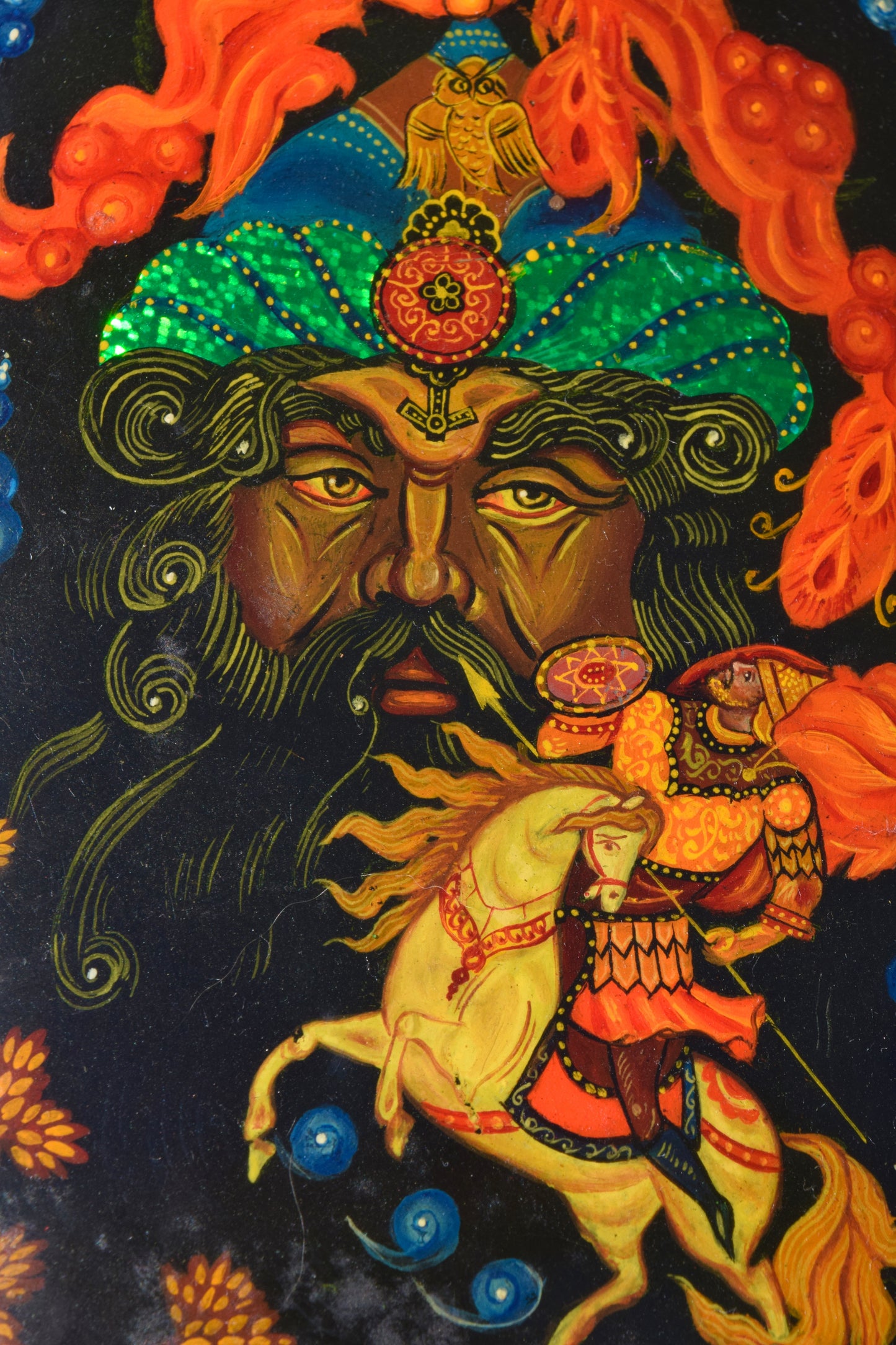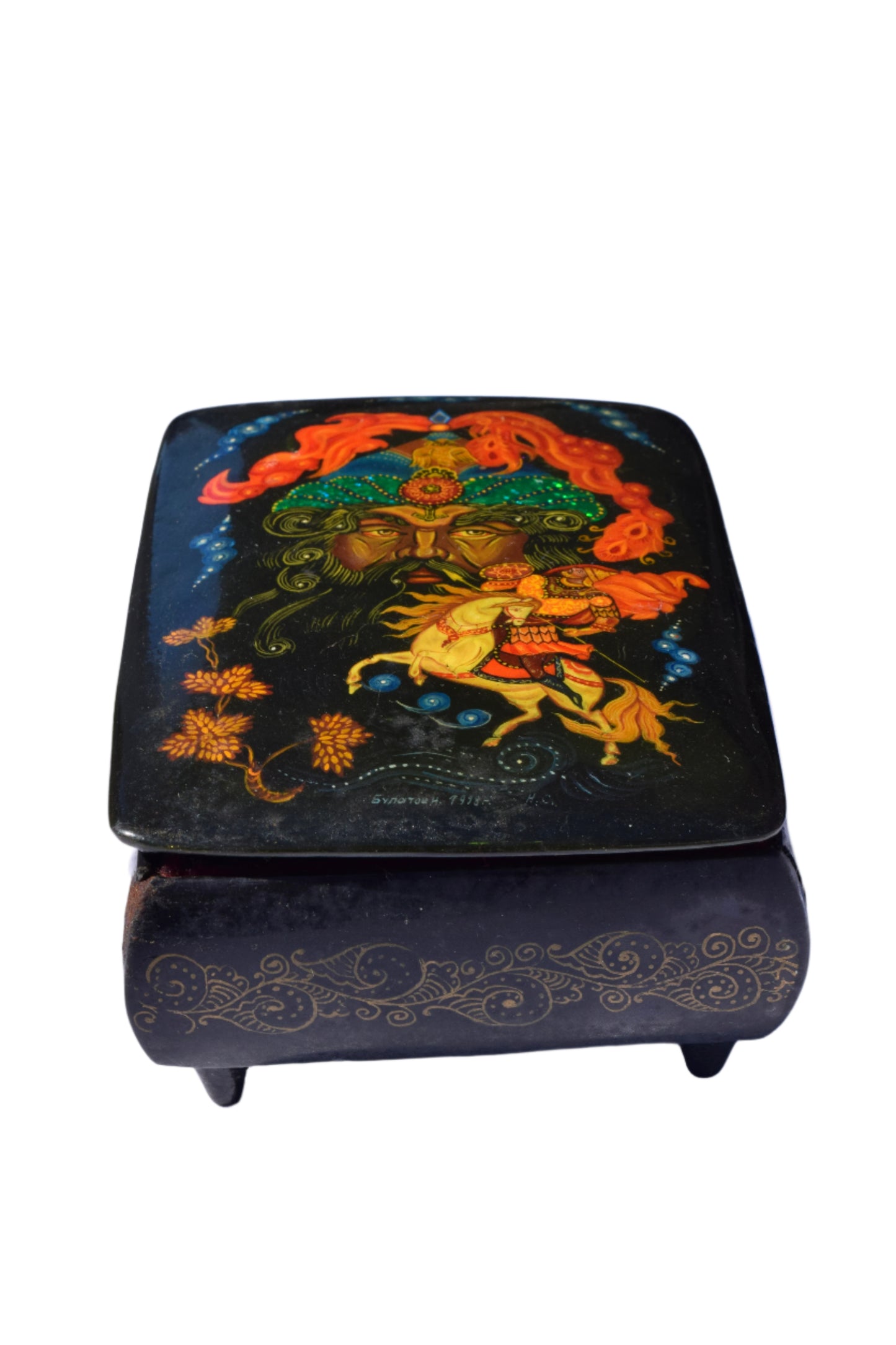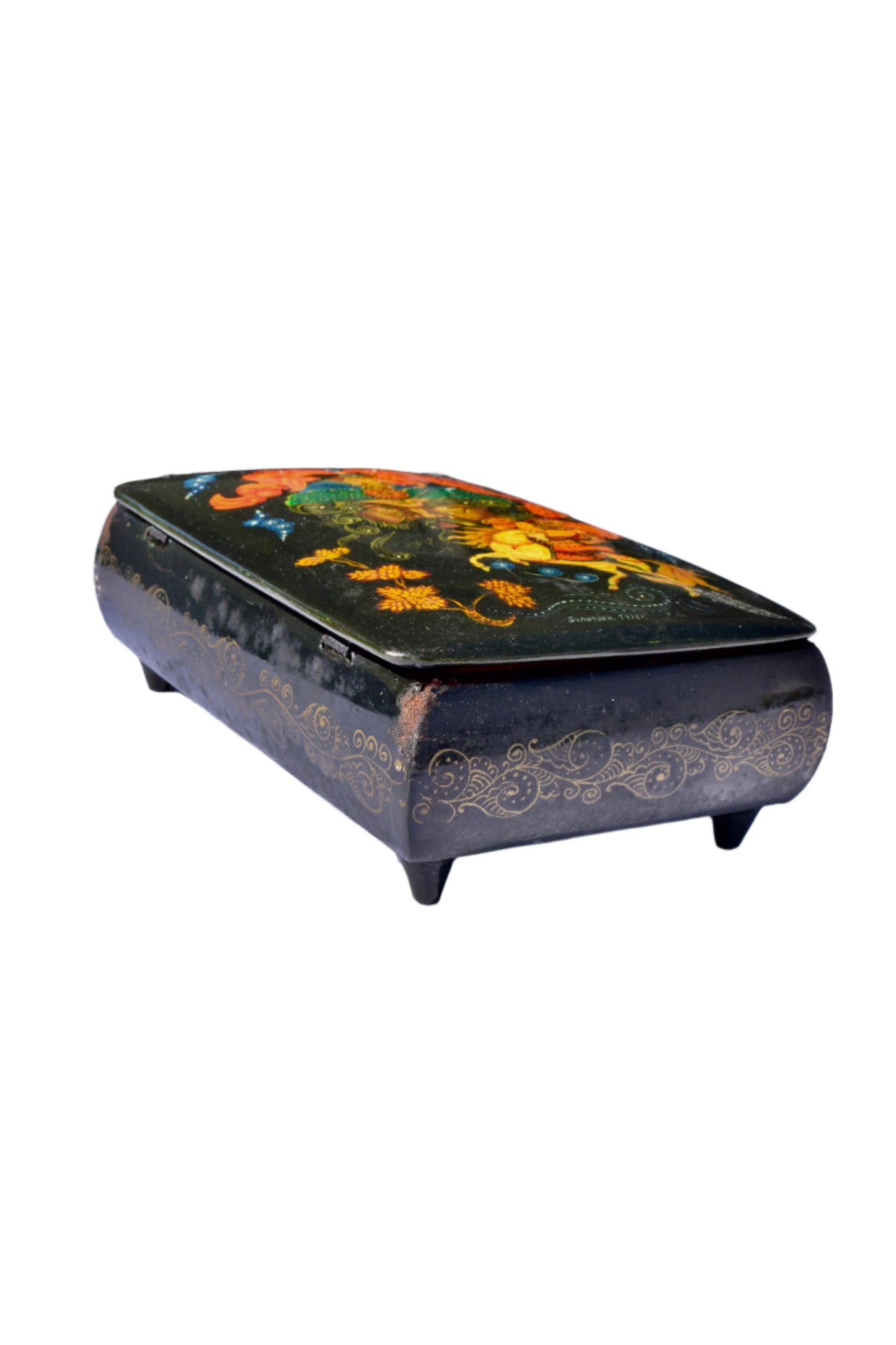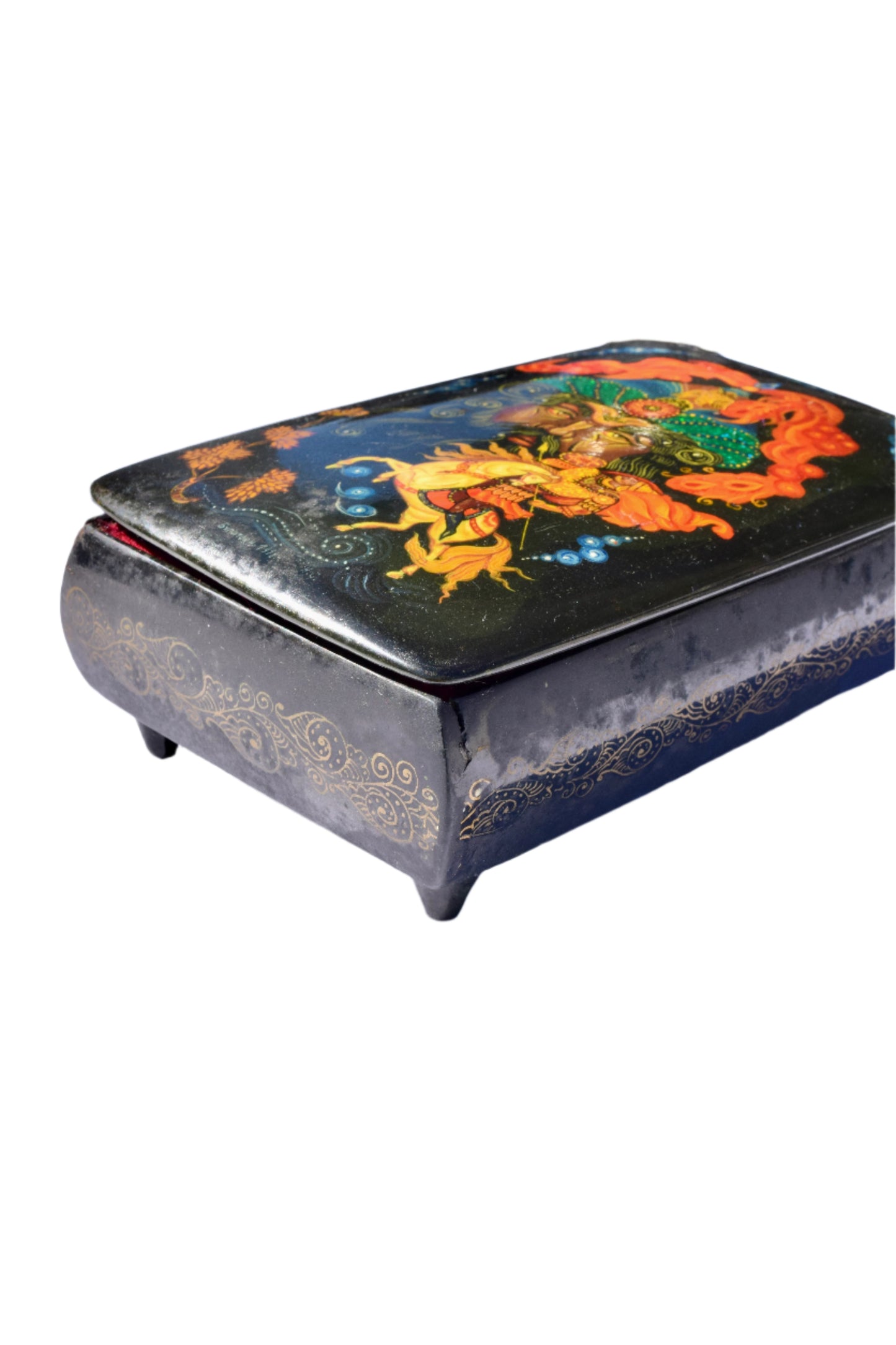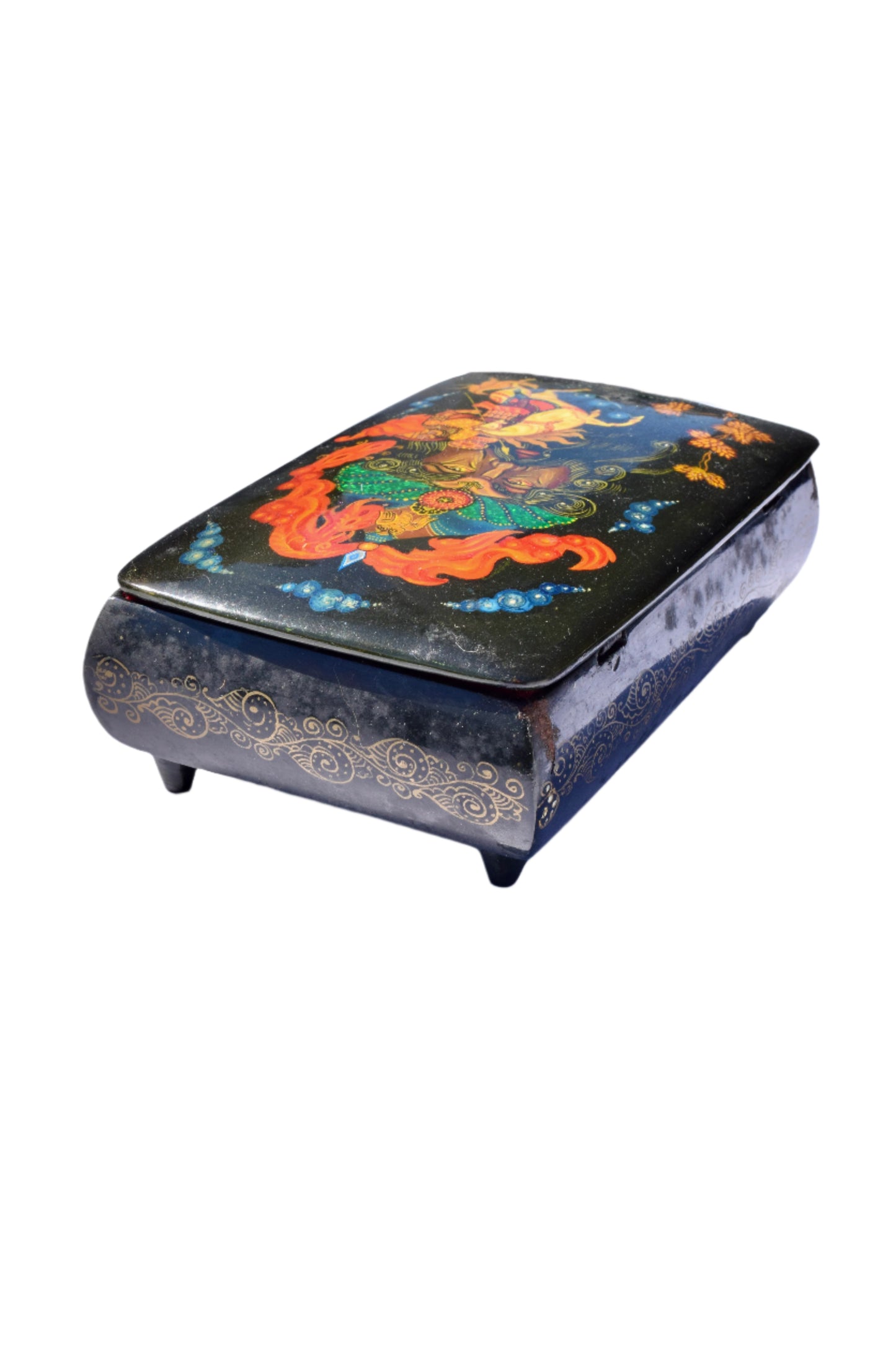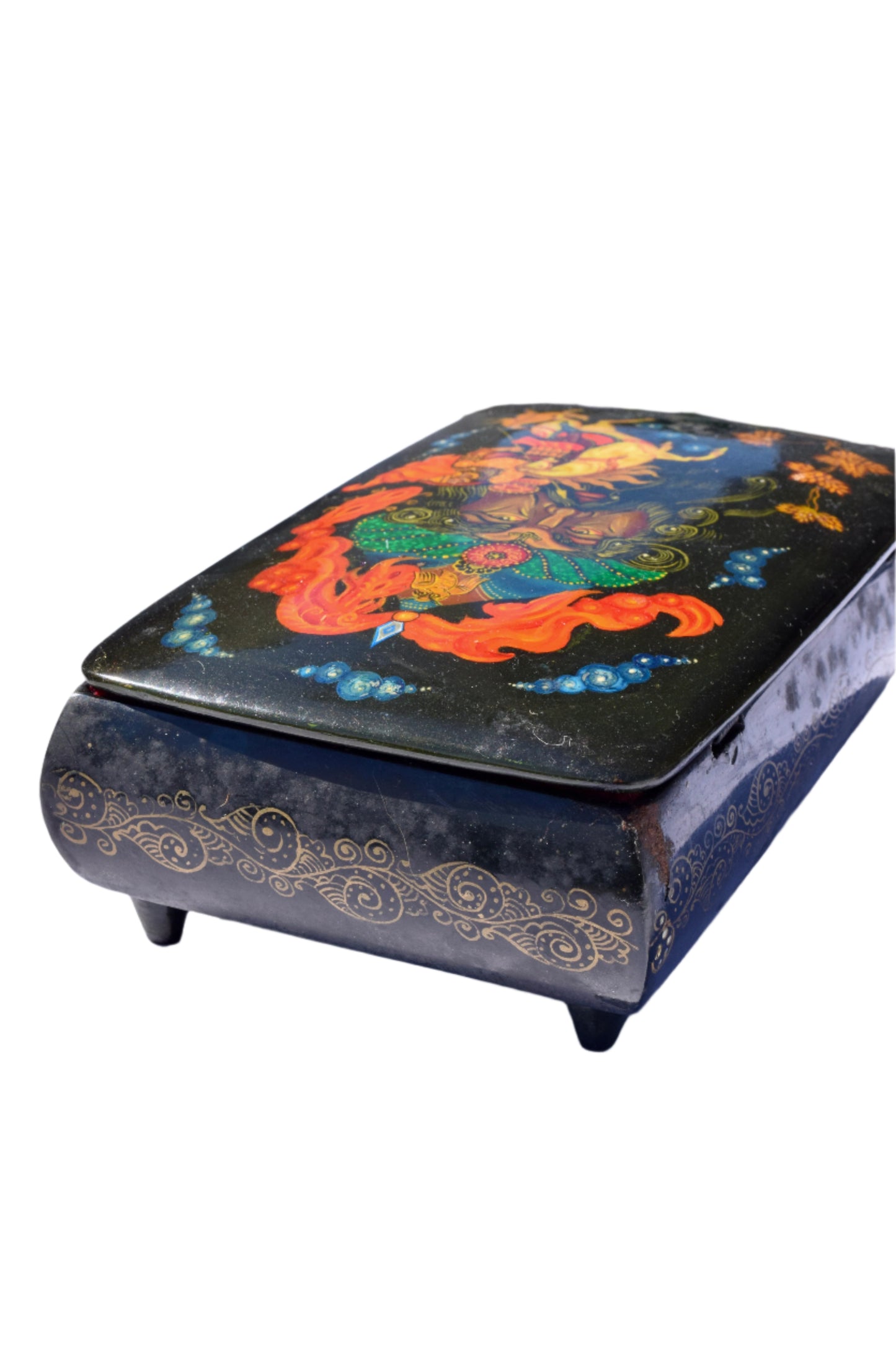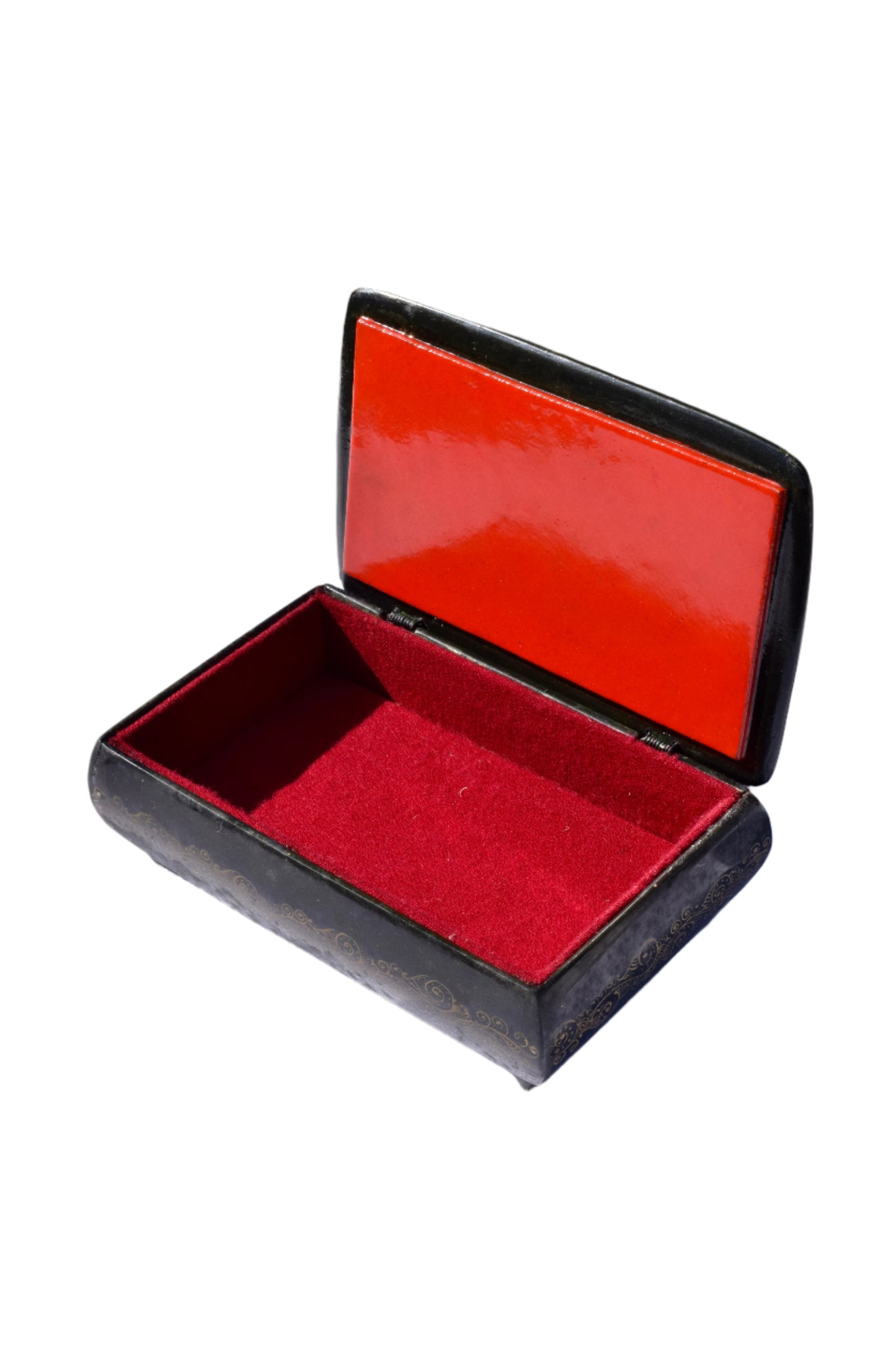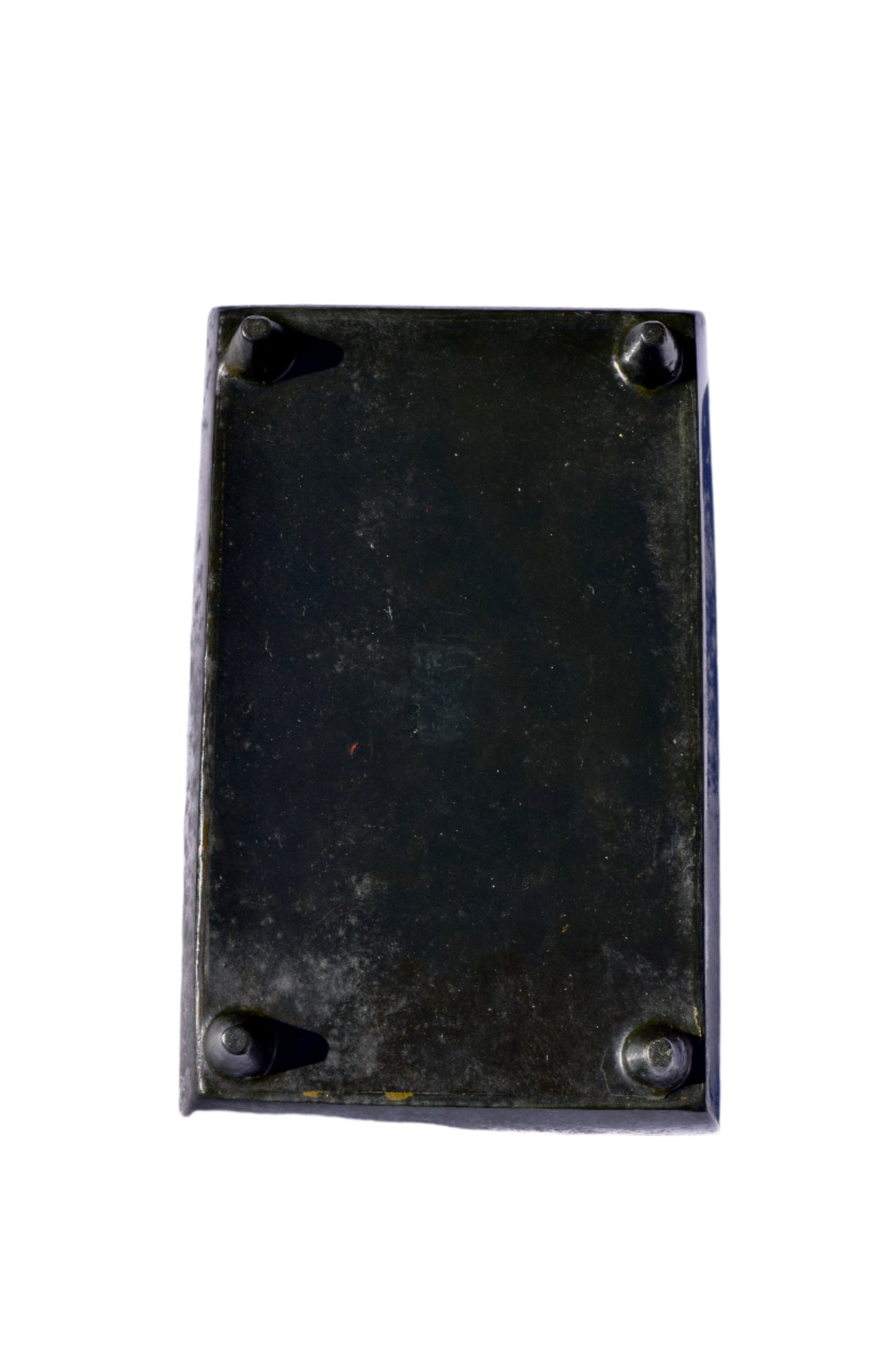Russian Painted Lacquer Box-Bogatyr Warrior
Russian Painted Lacquer Box-Bogatyr Warrior
Couldn't load pickup availability
RUSSIAN PAINTED LACQUER BOX - BOGATYR WARRIOR
Era: Mid-20th Century
Origin: Russia (Possibly Palekh or Fedoskino)
Material: Papier-Mâché with Lacquer Finish
OVERVIEW:
A striking Russian lacquer box featuring a boldly painted mythological warrior scene against a dramatic black background. This traditional form of Russian decorative art showcases the meticulous hand-painting technique and vivid storytelling that characterize the renowned Russian lacquer miniature tradition.
SPECIFICATIONS:
• Dimensions: Approximately 7inches long, 4.25 inches wide
• Material: Papier-mâché with multiple layers of lacquer
• Origin: Russia (likely from one of the main lacquer painting centers)
• Period: Mid-20th Century (Soviet era)
• Type: Decorative Box/Collectible
DESIGN ELEMENTS:
• Decoration:
- Heroic warrior figure with elaborate green and orange headdress
- Warrior mounted on white horse
- Ornate facial features with curling beard and mustache
- Vibrant color palette of orange, green, blue, and gold
- Floral accents and decorative blue dots
• Artistic Features:
- Narrative folk art composition
- Stylized figure representation
- Intricate detail work
- Bold color contrasts against black background
- Dynamic movement in the design
• Technical Features:
- Hand-painted miniature artwork
- Multiple layers of lacquer
- Artist's signature (visible in lower portion)
- Traditional papier-mâché construction
- Smooth, glossy finish
CONDITION:
Very Good Vintage Condition
• Some expected wear to lacquer surface
• Minor scratches consistent with age
• Well-preserved painted details
• Intact box structure
• Authentic patina
HISTORICAL SIGNIFICANCE:
This box depicts imagery likely inspired by Russian epic poetry (byliny) and specifically Pushkin's "Ruslan and the Head," a tale drawn from Russian folklore about heroic warriors known as bogatyrs. Russian lacquer boxes gained international recognition during the Soviet era as both folk art and export items that showcased traditional Russian artistic skills. Each of the main production centers (Palekh, Fedoskino, Mstera, and Kholui) developed distinctive styles, with particular approaches to color, composition, and subject matter. These boxes represent a significant artistic tradition that preserved Russian cultural heritage throughout the Soviet period.
DECORATIVE SUGGESTIONS:
• Display in a curio cabinet or on a bookshelf
• Collection of Russian decorative arts
• Conversation piece on coffee table
• Storage for small jewelry or keepsakes
• Paired with other Eastern European folk art
COLLECTING NOTE:
Russian lacquer boxes have become increasingly collectible, with examples from established artists commanding significant attention. The vibrant colors and dynamic composition of this box make it a particularly eye-catching example of this folk art tradition. The signature, visible in the lower portion of the scene, could identify the specific artist and village, potentially adding to its collectible value. Mid-century examples like this represent an accessible entry point for collectors interested in Russian decorative arts and miniature painting traditions.
Share
